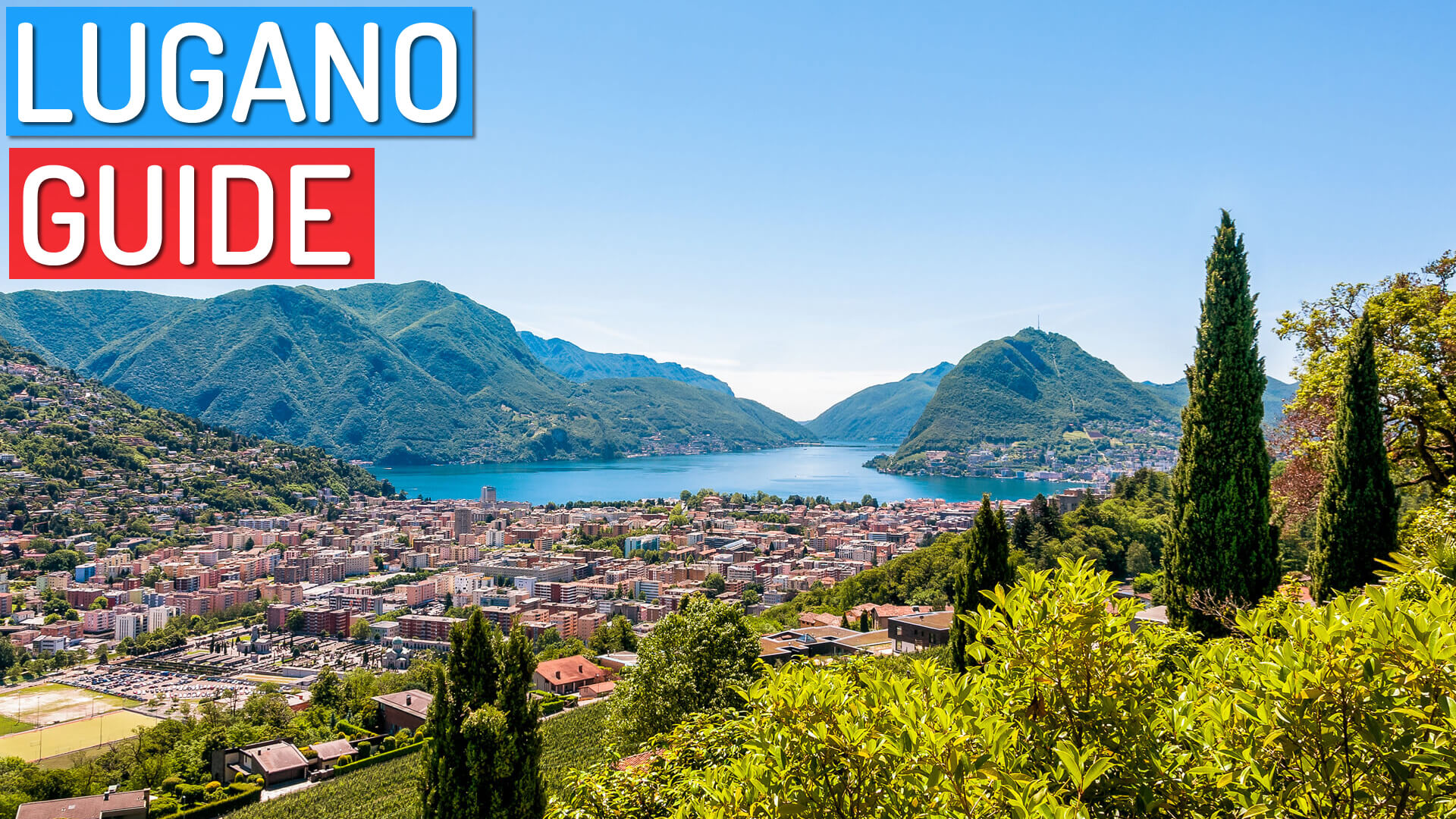Discover Lugano and City Travel Guide on WorldGuide Youtube Channel
Please subscribe on "World Guide" channnel on Youtube at youtube.com/c/WorldGuide
Etymology
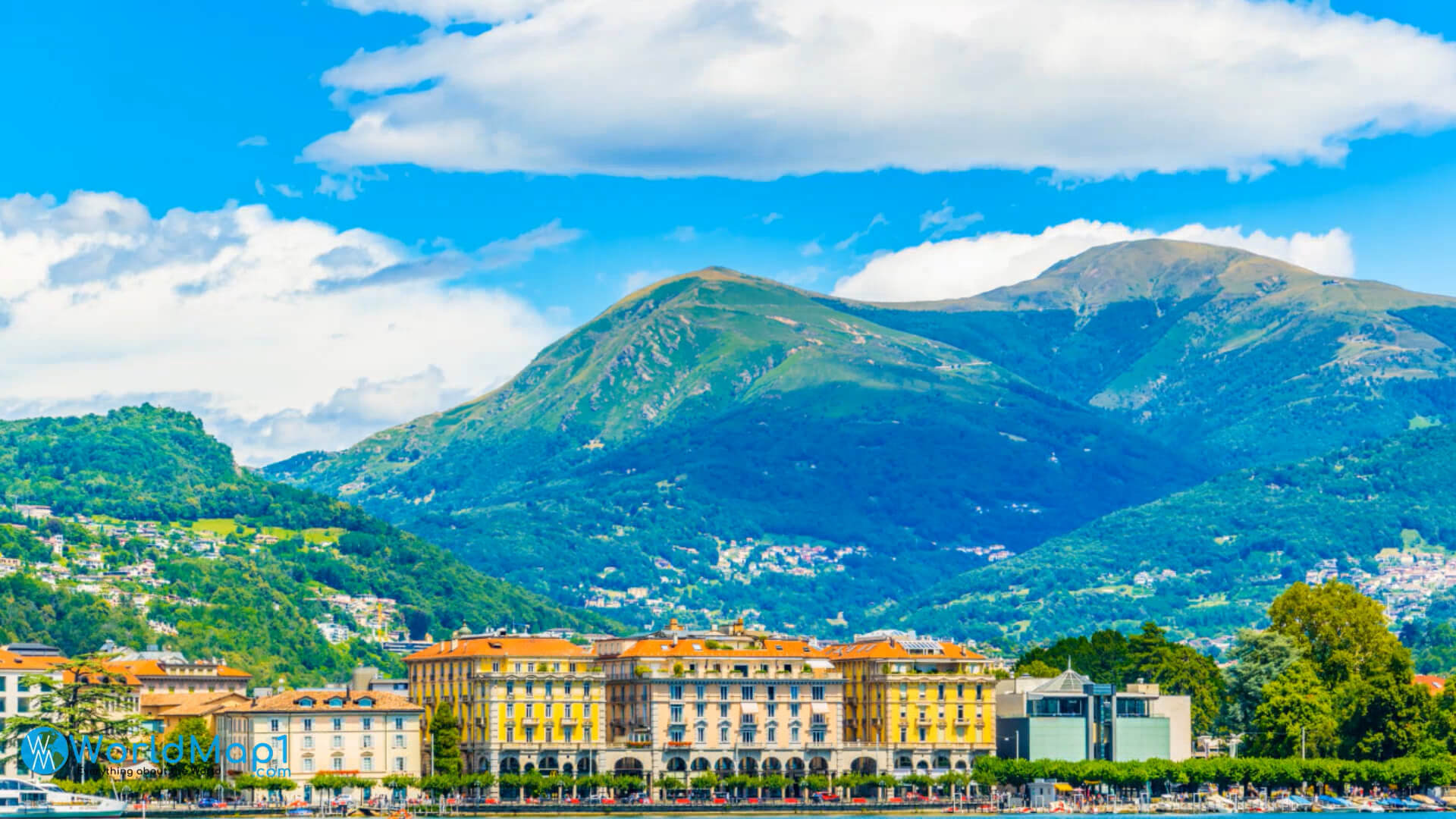
The name Lugano is the Italian language version of the city's Latin name, which was derived from the Celtic word "Lugus", meaning "light". The city was named Lugano in honor of Saint John the Baptist.
The Romans established a settlement here, but there are no records of it having been fortified before 1 BC. In AD 922 it became part of the county under King Berengar I (891-924). It grew rapidly, becoming an important trading centre on Lake Maggiore, until 1218 when Genoa took over as ruler and destroyed it during war with Milan. In 1395 more destruction came from another war: between Milanese and Visconti forces who fought over control of Lombardy; again in 1406 Milan took over as ruler and set up their own administration here until 1438 when Filippo Maria Visconti (1402-1447) regained power once again and restored order.
In 1512 Charles III (1516-1519) gave this town to his father Maximilian I (1486-1519), who then gave it back two years later because he didn't want anything from him; after that date there were various owners including Spain from 1620 until 1713 when they were defeated by England at sea off Spain's coast near Gibraltar!
Canton
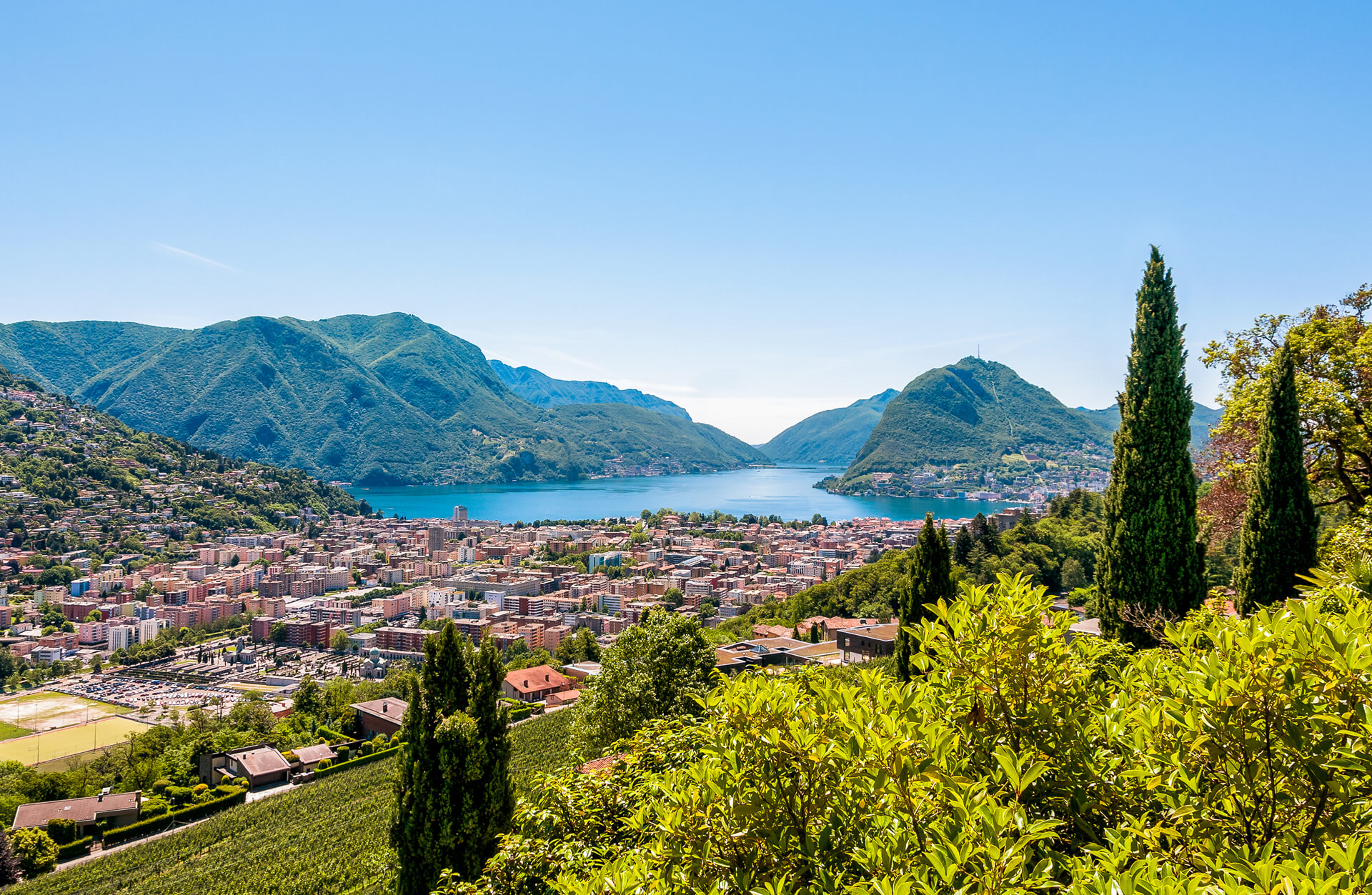
The city of Lugano is located in the canton of Ticino, which is one of the 26 Swiss cantons. The canton was created in 1803, and it has a population of about 380,000 people. In Italian, "Ticino" means "the riverbank" or "the little lake."
The city is known as "Italian Switzerland" due to its proximity to the border with Italy and because it's home to many Italians who immigrated there years ago when Switzerland was becoming more modernized and industrialized during the 19th century. It's also called "Lake Lugano" for obvious reasons!
Politics
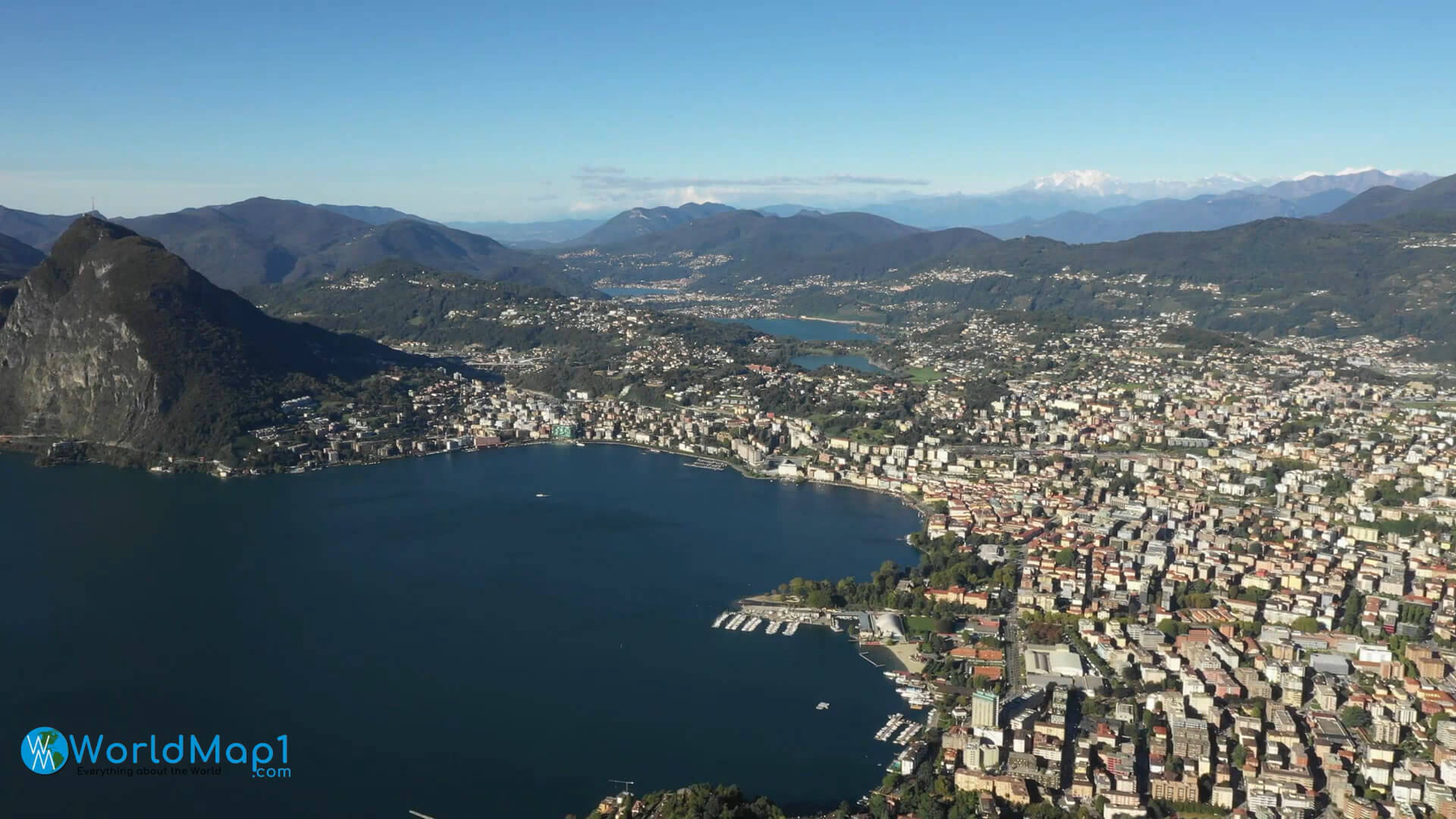
Lugano is the capital of the canton of Ticino, which forms the southernmost part of Switzerland. The city belongs to the Lombardy-Vallese administrative district, along with other cities.
As a result, Lugano has more autonomy than other Swiss cities. In fact, its political system is different from that in other parts of Switzerland because it is not governed by direct democracy but by a mayor and city council elected every four years.
Major Area
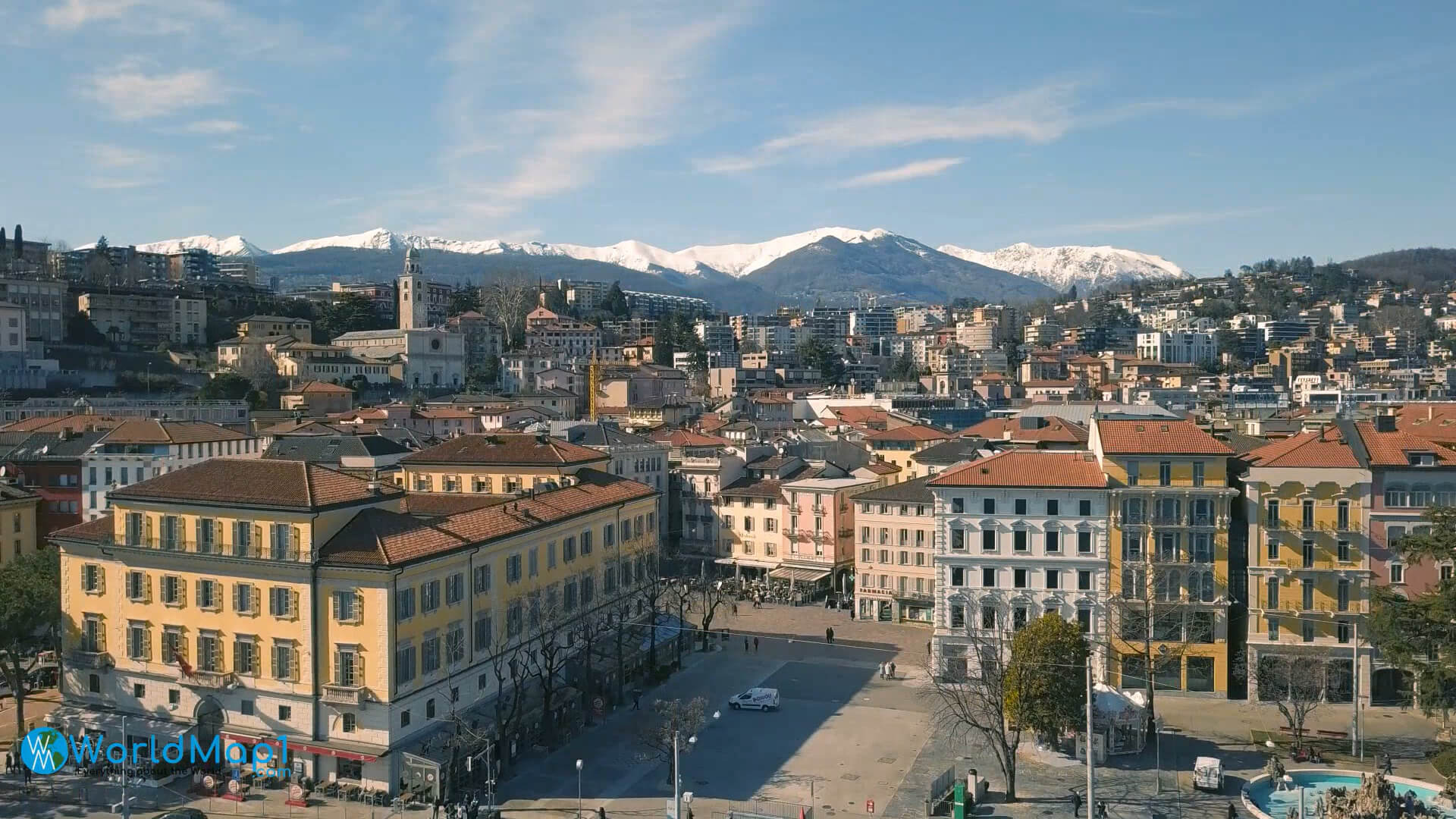
The main area in Lugano is Piazza Manzoni. It houses the city's cathedral, which was built in 1603 by Carlo Pallavicino. The church has been reconstructed several times over its history and it has changed from being a Roman Catholic Church to an Evangelical Church during this time as well as switching denominations of faith.
The square also houses several other important buildings such as the Roman-Gothic style Cathedral (1603), built by Carlo Pallavicino; Palazzo Pretorio or Town Hall (1800), designed by Francesco Corbelli; Palazzo Civico (1851), designed by Giacomo Morasini; Banca Popolare di Intra e Vedeggio building (1910), designed by Ernesto Baslini; Loggia della Gran Guardia (1568), designed by Giovanni Antonio Dosio; Palazzo Molino Bellinzona Casa Morosini-Ceriana building (1600), which now houses Comune di Lugano offices; Logge delle Corporazioni dei Mercanti e della Confraternita di San Michele Arcangelo del Castello Sverzutto building on Via Garibaldi street corner with Via Federico Confalonieri street corner with Via Luigi Casati street corner with Piazza Manzoni square entrance point to public gardens/green areas at front of building/fountain/statue etcetera.
Demographics
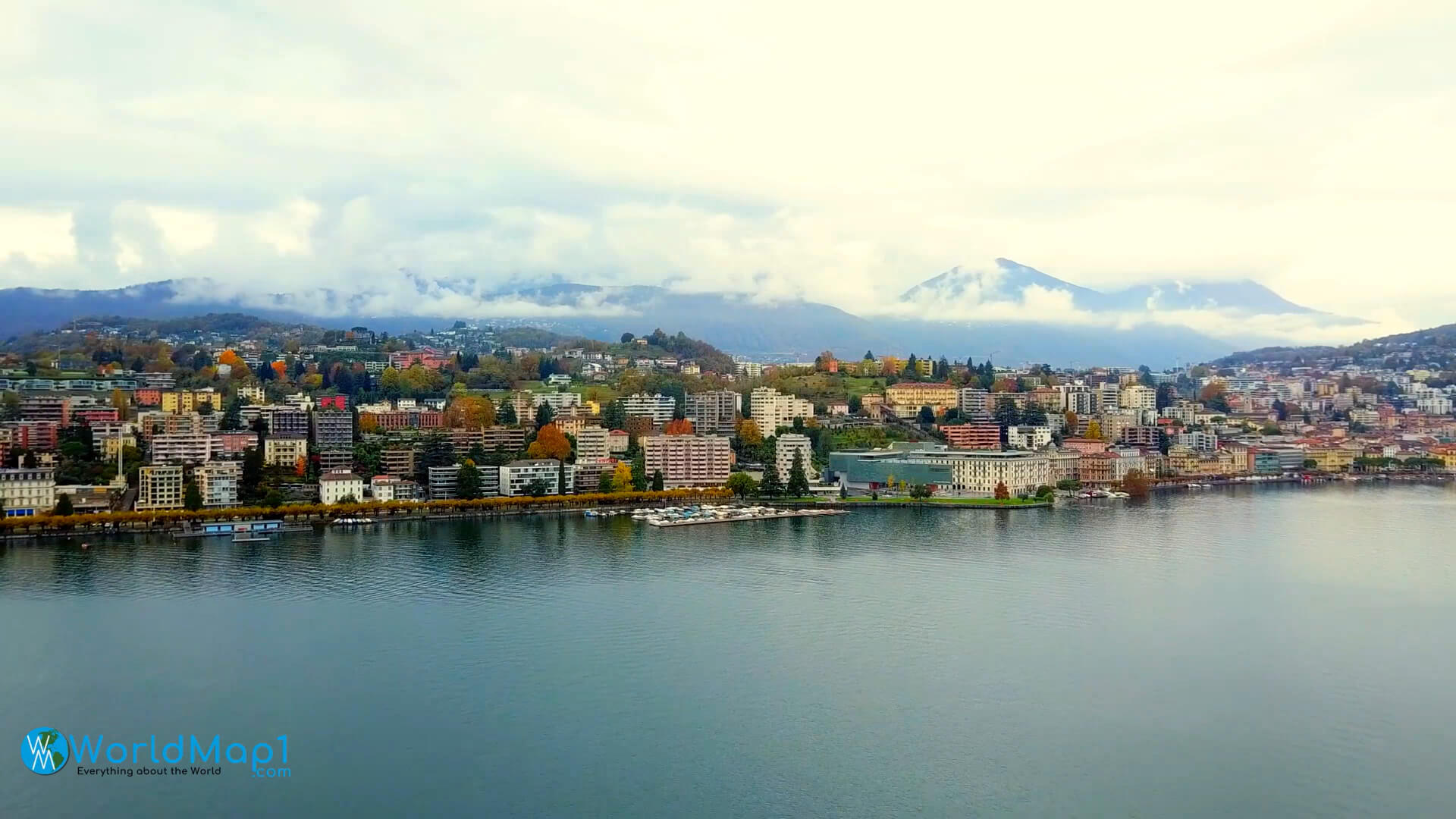
Lugano is the fifth-largest city in Switzerland, with a population of roughly 63,185 (2018 Census). It's also home to one of Europe's largest Italian communities.
As such, it's a very multi-cultural city with Swiss German and Italian speakers as well as immigrants from all over the world (including many who speak English). Like most Swiss cities, Lugano is safe; you can wander around downtown without worrying about your safety or getting lost.
Religion
Lugano is a city that dates back to Roman times, and the Roman Catholic Church has had a large presence in Lugano ever since. There are many churches and religious festivals throughout the city, including:
- The Cathedral of San Lorenzo Martire, which was built in 1488 on top of a pre-existing church founded by Charlemagne
- The Church of Sant'Antonio Abate, which contains gilded artworks dating back to 1650 as well as numerous sculptures depicting saints (which can be visited during religious festivals)
- The Sanctuary of Madonna del Sasso—a pilgrimage site where miracles are believed to have occurred—and adjacent convent
Languages
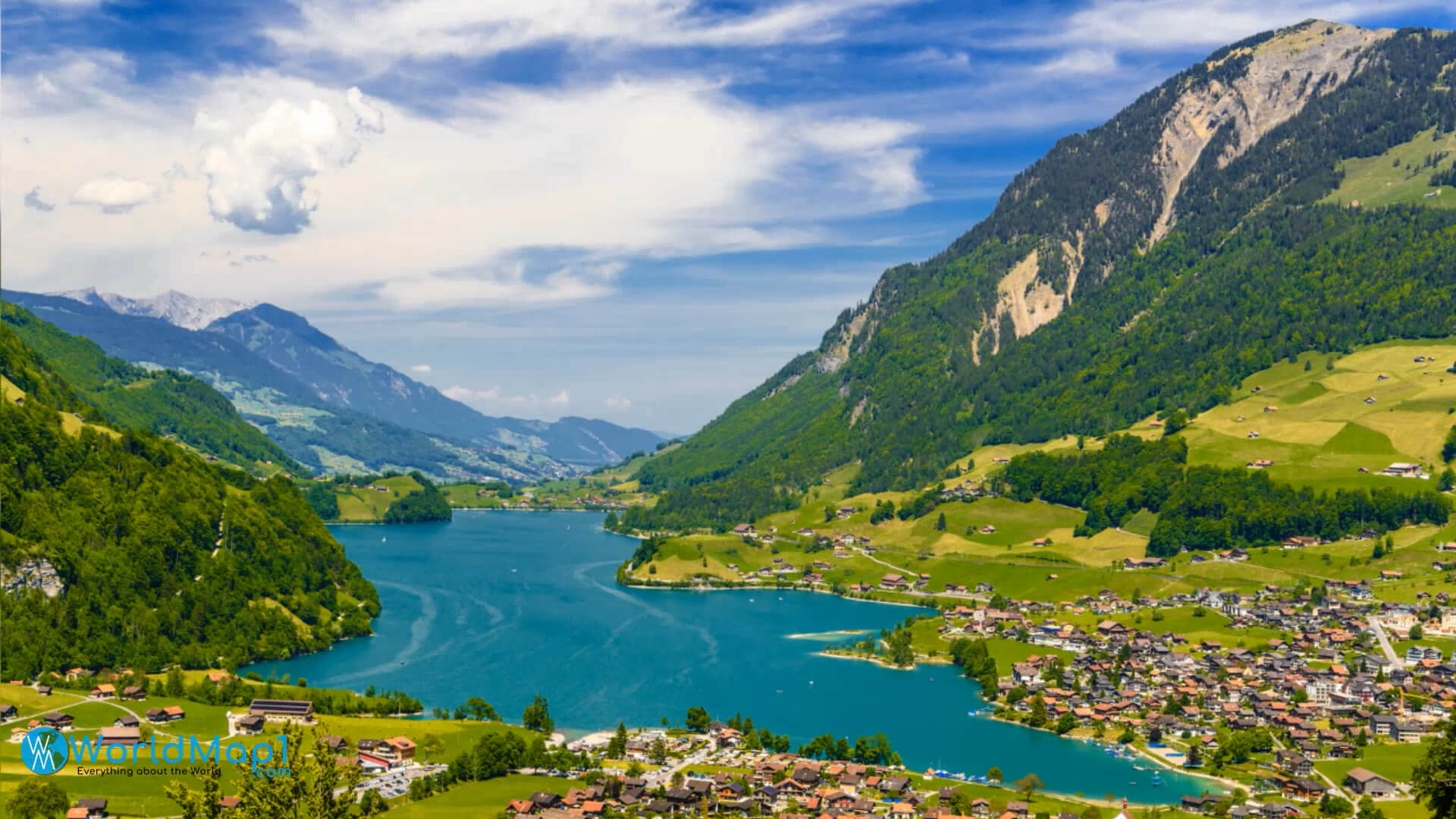
Lugano is a city with a rich cultural heritage, and that heritage has been shaped by its diverse population. The city has been home to Italian, German, French and Romansh speakers for centuries. While these languages are all official in the city of Lugano (making it the only place in the world where four languages are spoken), Italian is by far the most widely spoken language. In fact, roughly 60% of people in Lugano speak some form of Italian as their first language, followed by German at about 25%. French comes third at about 12%, followed by Romansh at 1%.
It's safe to say that learning one or more foreign languages is an excellent way to get ahead professionally—especially if you're looking for work outside your home country! Whether you choose to study abroad during your university years or take classes locally after graduation, being multilingual will open up many doors for you down the road.
History
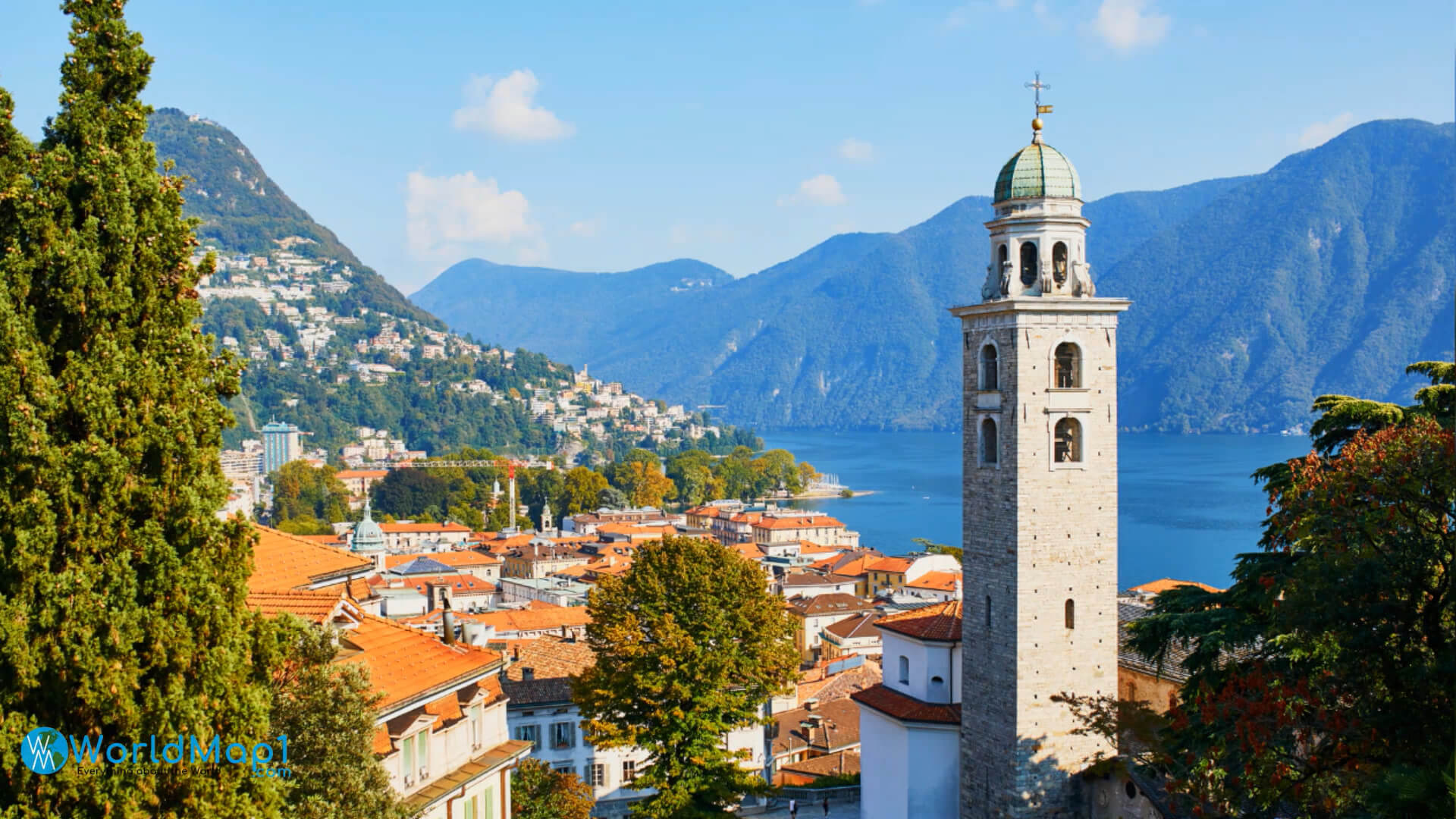
Lugano has a long history. The city was first mentioned in documents in 922 as Luviniaco, and it was part of the Duchy of Milan from 1395 to 1447.
In 1512, the city became part of the Swiss Confederation. In 1798, Lugano became part of the Cisalpine Republic until 1802 when it returned to be part of Switzerland.
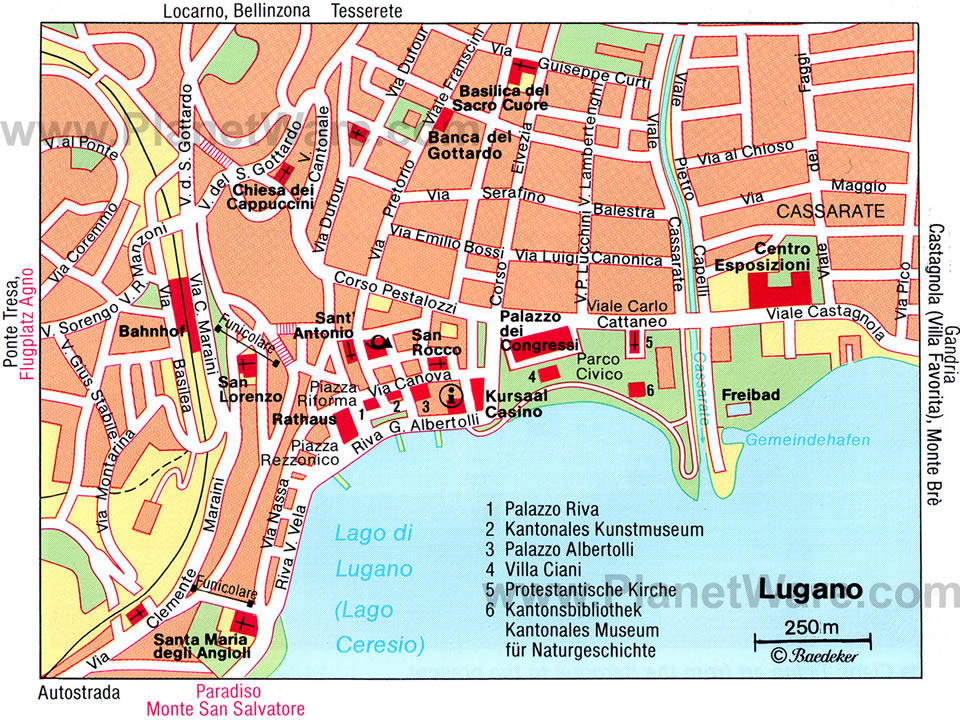
Lugano is located in the lower part of Italian-speaking Switzerland, on the shores of Lake Lugano. It is located between the Alps and lake.
The city was founded as a Roman colony in 15 BC under the name "Lugdunum" by emperor Claudius as an outpost to protect Italy from invasion from Gauls (modern France). The city flourished when it became part of Ancient Rome's trade route with northern Europe. After the Roman Empire fell, it became part of Lombardy and then later joined with Cisalpine Gaul to become Italy itself around 100 BC. During this time period Lugano was known as "Augstum Claudio" or "Augusta Raurica Colonia". It remained under control by various powers until 1798 when Napoleon took over Italy after he defeated Austria at Marengo.
Climate
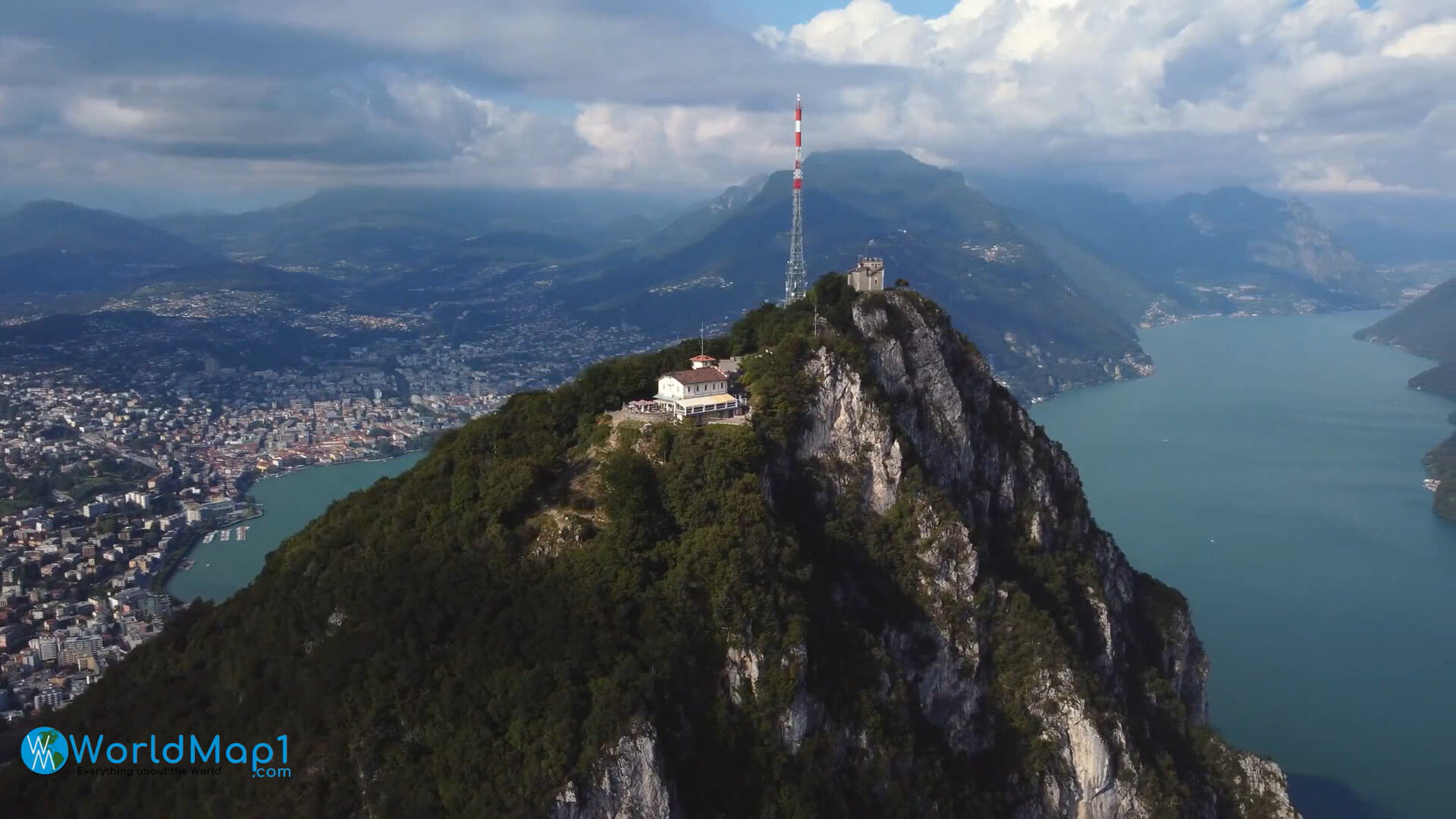
Lugano's climate is mild, with cold winters and warm summers. The city is surrounded by mountains, and situated on Lake Lugano (which has a maximum depth of about 200 meters). As it's located in the southern hemisphere, Lugano has winter when Australia has summer and vice versa.
Economy
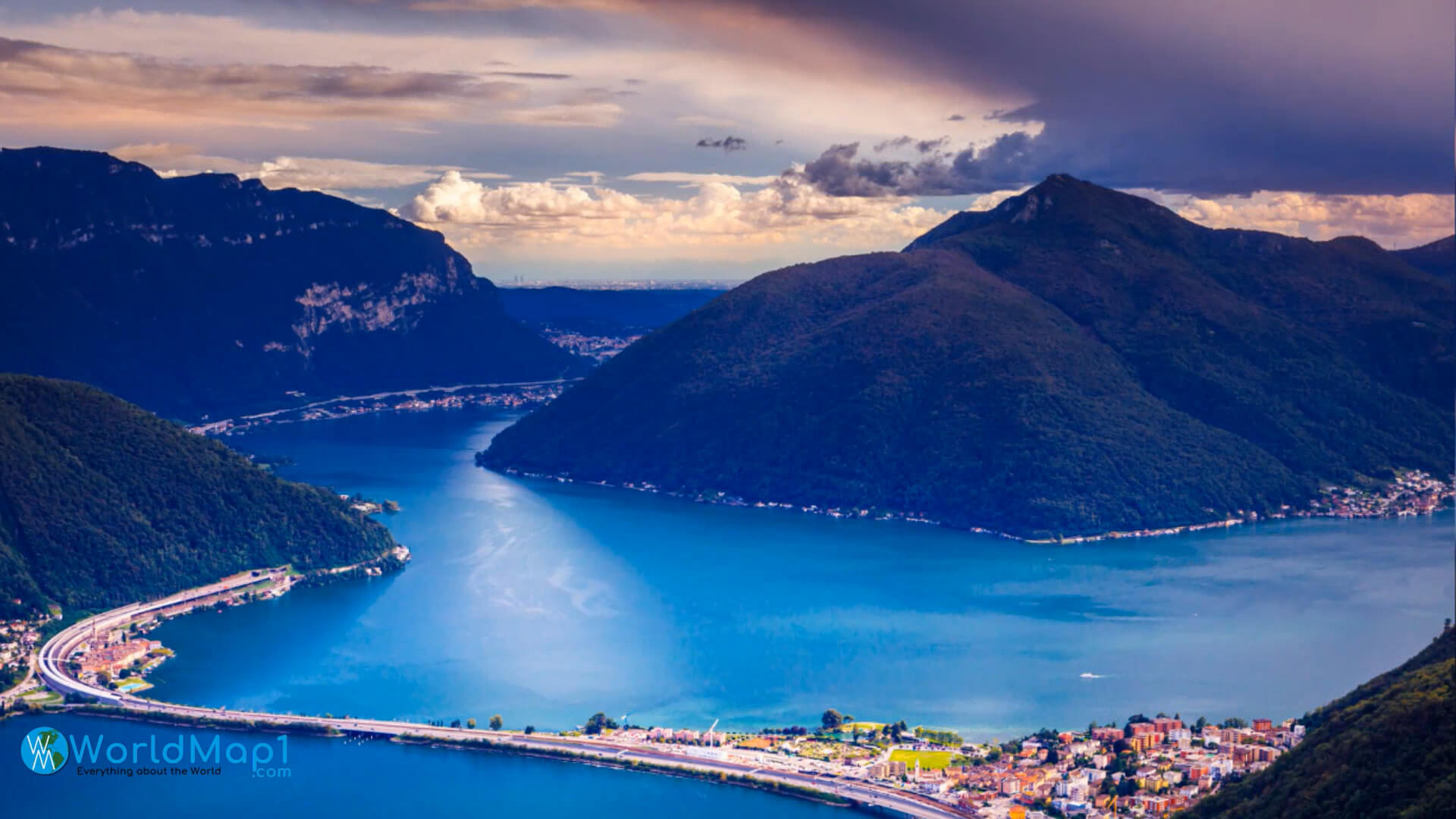
The economy of Lugano is largely based on finance, tourism and high-technology. The city has a large number of international companies and hosts the headquarters of several major banks. Many expatriates live in Lugano to be close to their work or for shopping purposes.
Lugano is often considered one of Europe's most important financial centers; it has been referred to as "a tax haven in the middle of Switzerland". The southern Swiss canton attracts firms due to its geographical location near Italy and various European capitals, low corporate taxes and absence of banking secrecy laws. It is home to twenty-five percent (about 3,000) of all private banking offices throughout Switzerland. As many as 1/5th foreign firms have been located there since 2009, with approximately 600 offices between them.
Education
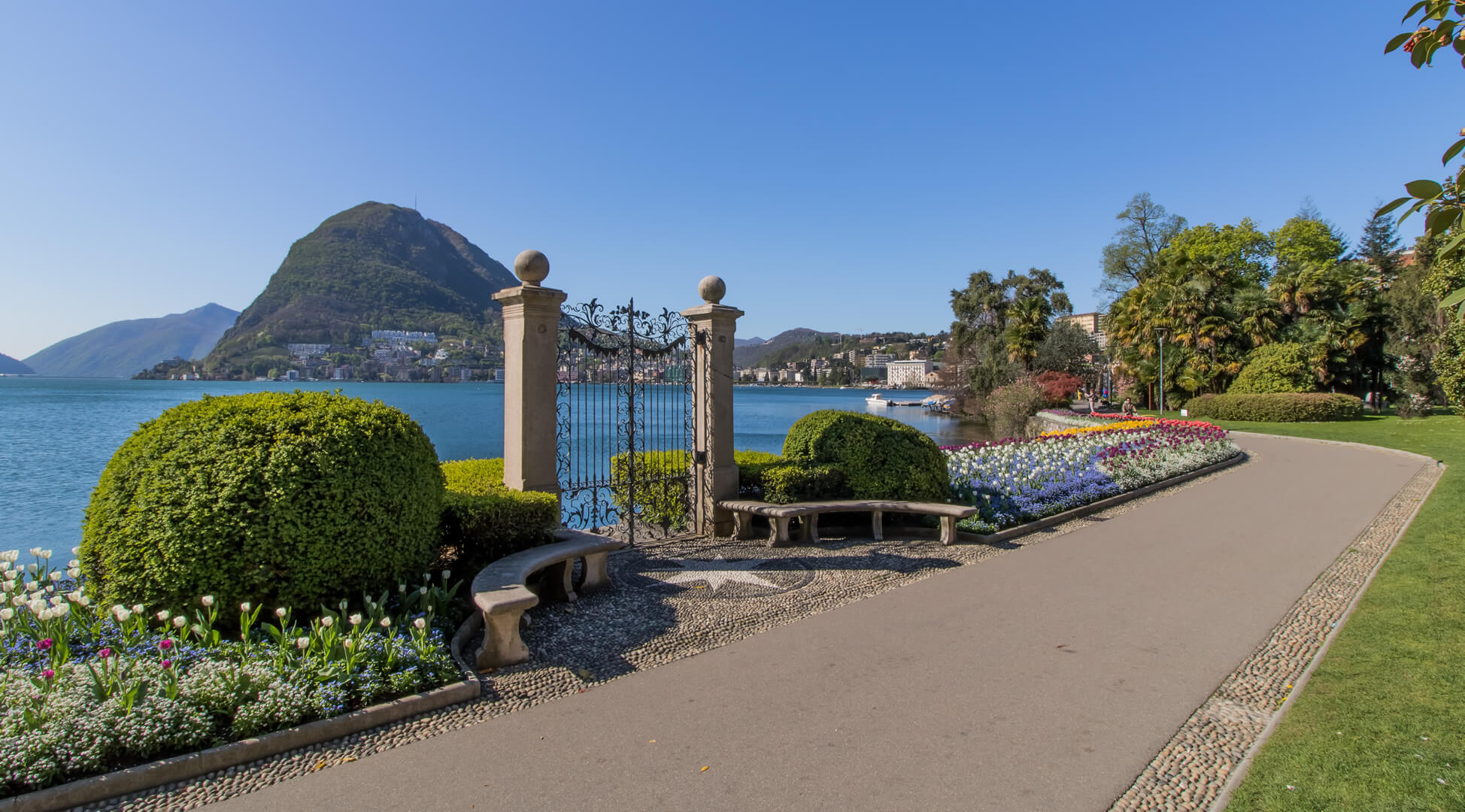
Lugano has a number of universities and colleges. These include the University of Lugano, the Academy of Fine Arts, and the Swiss Institute for Art Research (ISAA).
Lugano also has a number of international schools. These include Notre Dame de Sion School, International School of Lugano (ISL), and Lycée Français d'Italie - Ecole Internationale de Milan - Campus Lugano.
Likewise, it also has several international colleges: Università della Svizzera Italiana (USI), Scuola Internazionale Superiore di Studi Avanzato (SISSA), International College for Advanced Studies IUSS in Pavia. In addition to these, there are numerous other postgraduate programs offered at both public and private institutions in Lugano such as Mediterranea University or La Sapienza University of Rome in Switzerland which provides students with higher education options within this city
Universities and Colleges
University of Lugano
The University of Lugano is the only university in the canton of Ticino and was founded in 1968. It has four faculties (Arts, Law, Economics and Engineering) with a total enrollment of over 6,000 students. The main campus is located in Borgo Poggio, an area known as a UNESCO World Heritage Site and designated as an environmentally protected area since 2000. There are also smaller campuses scattered around Lugano where classes take place.*
Lugano College of Economics, Business and Finance
This college offers courses on economics, management studies, business administration and finance.* *Lugano College of Engineering Architecture Design This college offers both undergraduate degrees and postgraduate studies in architecture* *Lugano College Humanities Arts Social Sciences This college offers courses on history sociology political science classics philosophy languages arts music theatre design communication/* *Lugano College Sport Health Wellbeing This college offers sports management physical education sport sciences sociology psychology physical education marketing management law
Lugano is located on Lake Lugano and has approximately 40 minutes to Milan by train. The city has been host to several important international conferences; it was here that the Treaty of Rapallo between Italy and Switzerland was signed in 1920, which forms the legal basis for relations between those two countries today.
Culture
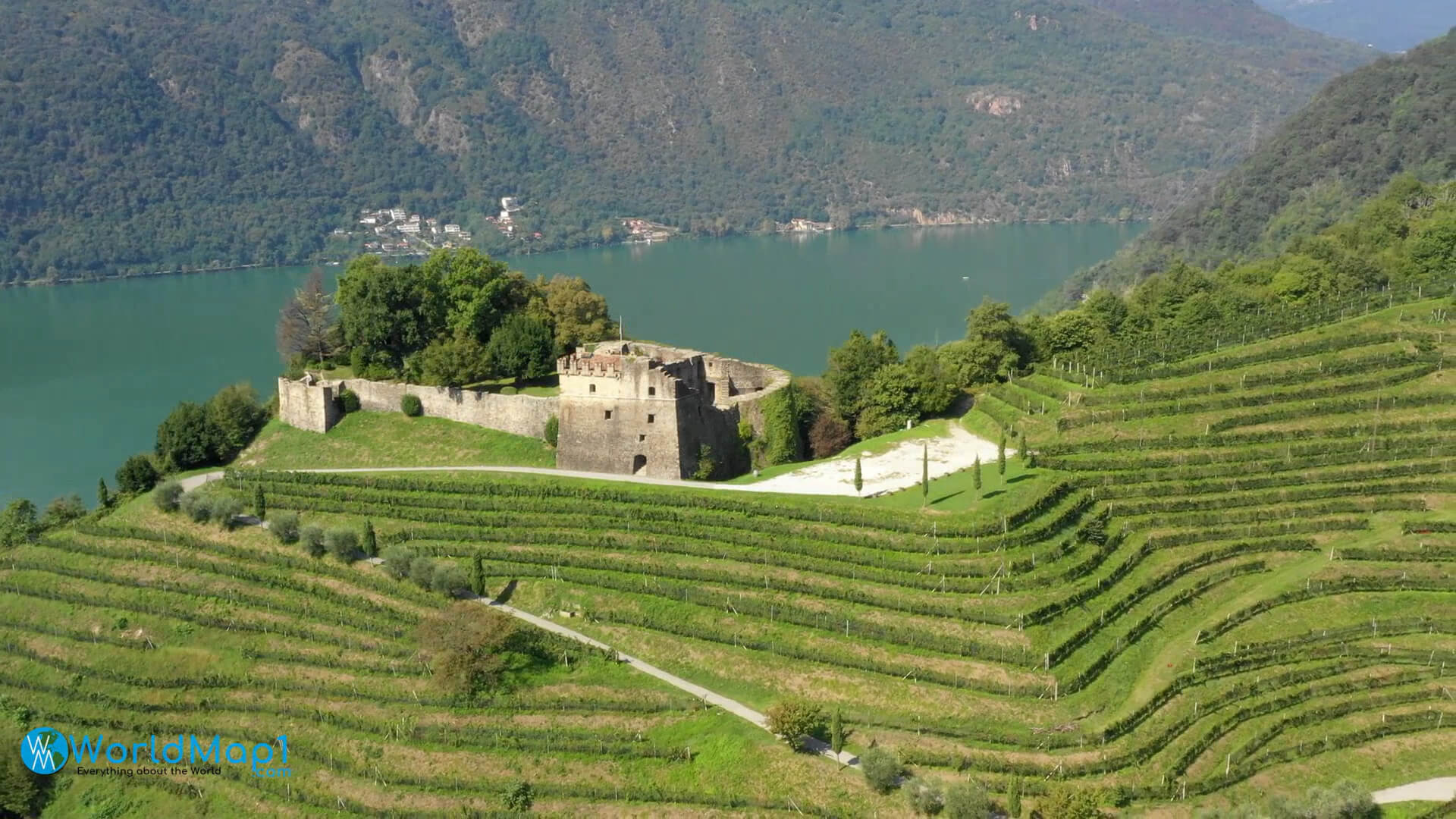
The town of Lugano is home to an opera house, a theater and several art galleries. The city has a museum dedicated to the works of Gottardo Piazzoni that is open year-round.
A range of musical events takes place throughout the year, including an annual classical music festival in September featuring local musicians as well as internationally acclaimed performers from abroad.
The Lugano Film Festival focuses on films with social themes produced by independent filmmakers worldwide. It also hosts two other film festivals: the Festival del Cinema Locarnese (in collaboration with Locarno) and the Festival del Cinema Svizzero di lingua italiana (in collaboration with Bellinzona).
Sport
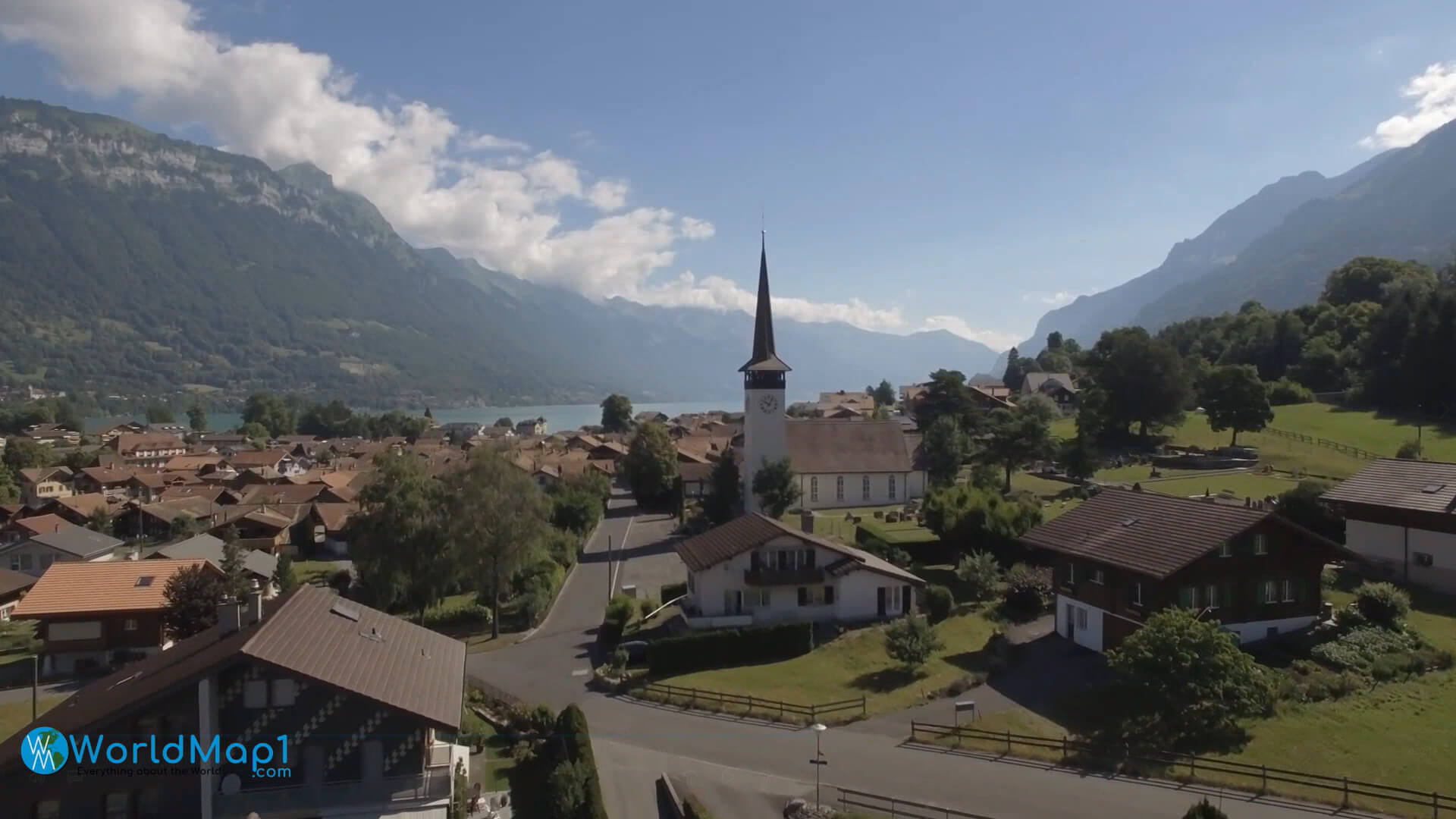
Lugano is a city in southern Switzerland in the Italian-speaking canton of Ticino bordering Italy. It has a population of 71,500, and an urban agglomeration over 145,000. The 9th largest Swiss city, it is the largest in Ticino and largest with an Italian speaking majority within Ticino.
As there are so many exciting sports to try out at Lugano you should definitely check out some of these places:
- The Lugano Golf Club – This club was founded in 1908 and has since become one of the most popular clubs for golf lovers to visit during their stay in Lugano. With its stunning views over Lake Lugano this club offers 18 holes which are spread across two different courses; one being short course whilst other being long course!
- Tennis Club – Next on our list is Tennis Club at Villa Ca' Balbianello where you can play tennis outdoors with your friends or family members all year round thanks to climate conditions here being milder than elsewhere on earth thanks to proximity from Italy's border area just 50km away from here (which makes summers hotter).
Museum
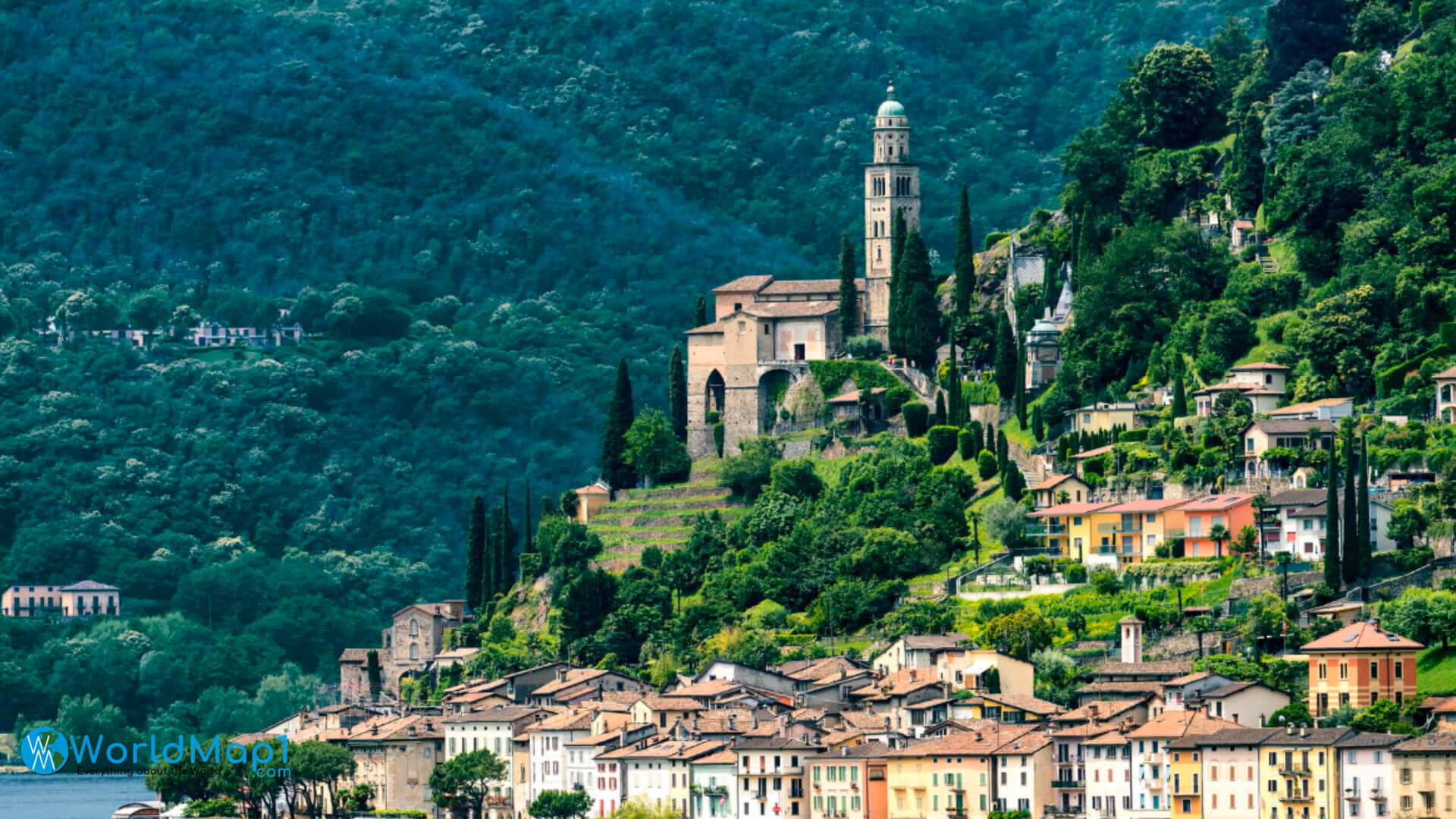
Museo civico di Lugano
This museum has an impressive collection of paintings by Swiss and Italian artists. It also has works by Flemish artists such as Van Dyck, Rubens, and Rembrandt. The museum was established in 1896 and has been open to the public since 1921. In addition to the permanent collection, there are frequent special exhibitions presented by guest curators from around the world.
Museo cantonale d'arte
This museum focuses on paintings and sculptures created between 1800-1970, specifically those made within Ticino itself or by artists who lived in Ticino at some point during their careers (although this includes non-Swiss artists). The permanent collection includes works by Giovanni Antonio Pellegrini (1675-1741), Giovanni Battista Castello (1657-1743), Giambattista Bodmer (1599-1640), Giovanni Giacomo Monti (1846-1925), Louis Gabriel Blanc de La Vallée Poussin (1863–1939) and many more!
Museo di storia naturale
The Natural History Museum is part of the Museo Civico di Lugano complex located along Lake Lugano's eastern shoreline just outside of town center near Piazza Manzoni metro stop. It houses numerous exhibits including: animals preserved in jars; fossils; minerals; plant specimens; butterflies mounted on pins with labels describing where they were collected; stuffed birds/animals with glass eyes looking out at you.
Media
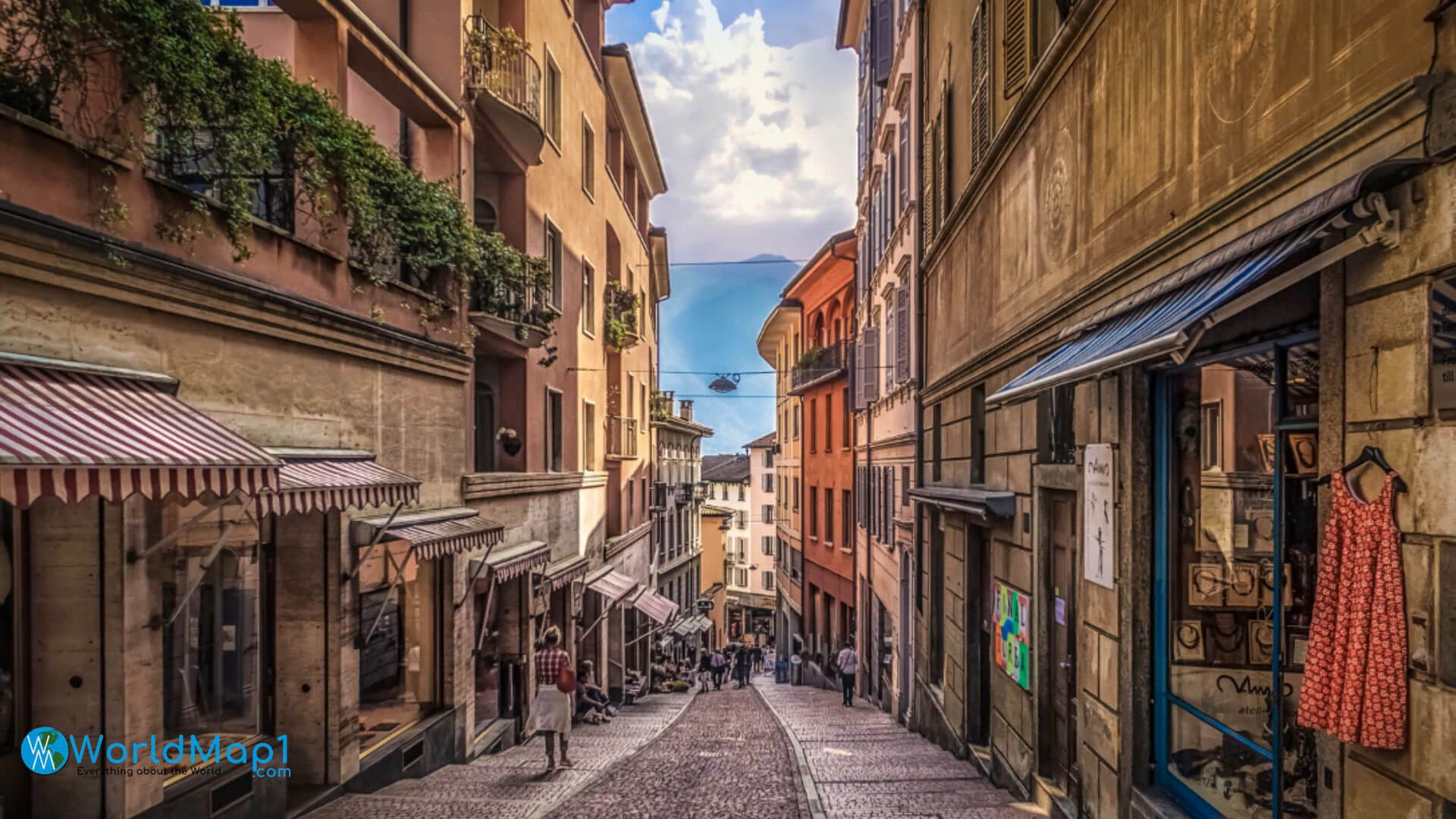
In terms of the media, Lugano is a vibrant city with a variety of options for news, entertainment and information. There are several radio stations that broadcast on FM and AM frequencies around Lugano. The most popular radio station is Radio Svizzera Italiana (RSI), which provides national news coverage as well as local programming. Other popular stations include Radio 24 and RSI Rete Due.
Lugano has two main TV channels: TSI 1 and TSI 2, both operated by Radiotelevisione svizzera di lingua italiana (RTSI). These channels provide national programming as well as local news coverage in French or Italian depending on where you live in the city.
There are many newspapers available in Lugano including Corriere del Ticino, Il Caffè News, 20 Minuti and Il Mattino della Domenica all'Avanguardia; each one covers events happening around town while also offering analysis on subjects ranging from politics to sports to culture.
Events
The International Film Festival of the Art of Cinematography is held in Lugano every year at the beginning of September. The festival presents new films from around the world and attracts movie stars, directors and producers.
This event is one of the most important film festivals in Europe, attracting more than 30,000 visitors every year. In addition to screenings there are also concerts with international artists as well as an exhibition at which you can get up close to some amazing pieces of film history like costumes or props used by your favorite actors!
Cuisine
Lugano is a great place to eat out. The city is known for its restaurants and bars. It has a number of Michelin-starred restaurants, many fish restaurants, several vegetarian places and even some gelaterias!
Transport
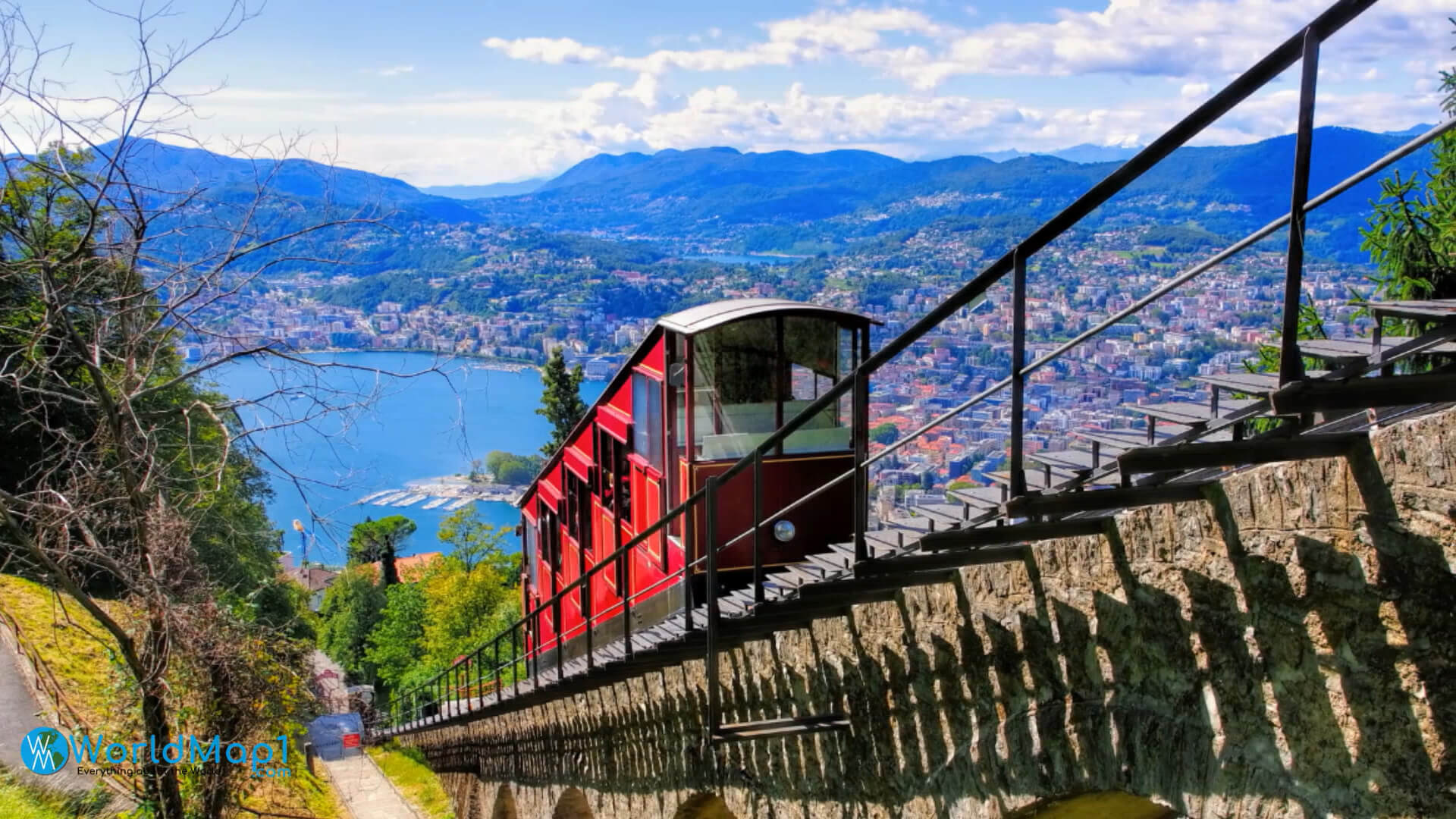
Lugano has an international airport, which is located in Agno, and a railway station at Lugano which is a terminus of the Gotthard Base Tunnel.
The city is also served by Lake Lugano and the Gotthard Railway line that links northern Switzerland and Ticino with central Switzerland. The station was opened on 10 June 1874 while the lake side station was opened on 12 December 1906.
The S10 motorway connects Lugano to Chiasso via Mendrisio and Airolo (which leads onto the A2 Motorway towards Italy). There are several car rental companies available at both airports as well as downtown with offices throughout most major cities around Europe.
Energy
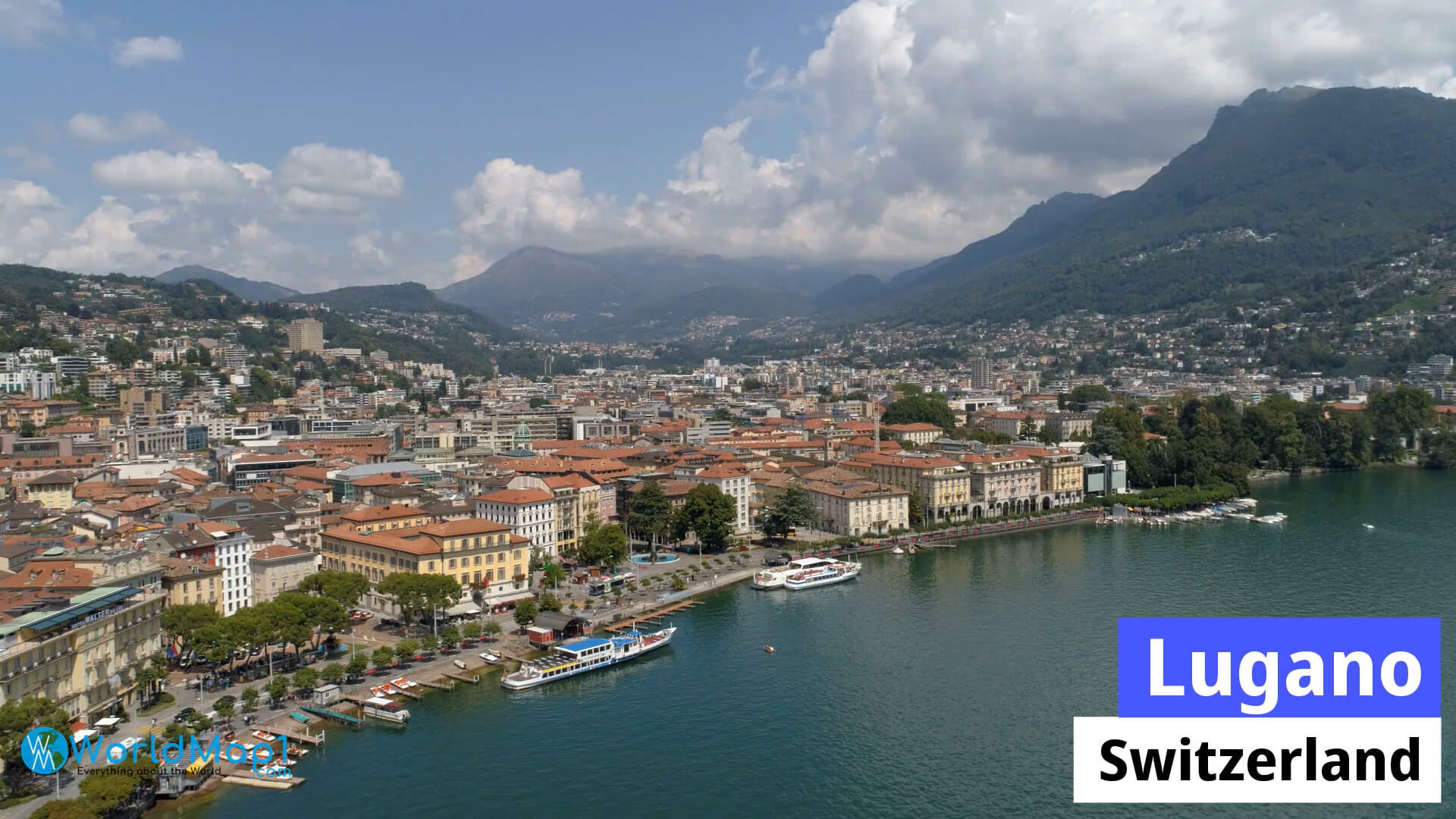
Lugano is one of the most important cities in Switzerland for research and development. It is home to the Swiss Federal Institute of Technology, which produces cutting-edge research on a range of subjects. The city also serves as the national center for scientific and technical research.
In addition to its academic resources, Lugano also boasts a number of multinationals that call it home. This includes companies like Nestle and Novartis Pharmaceuticals Corporation—as well as a large banking sector with numerous financial institutions headquartered here. These companies employ thousands of people who help generate revenue for both local businesses and the city itself in general.
Lugano is an important tourist center in the region; tourists make up roughly 10 percent of its population during peak season (May through October).
Notable People
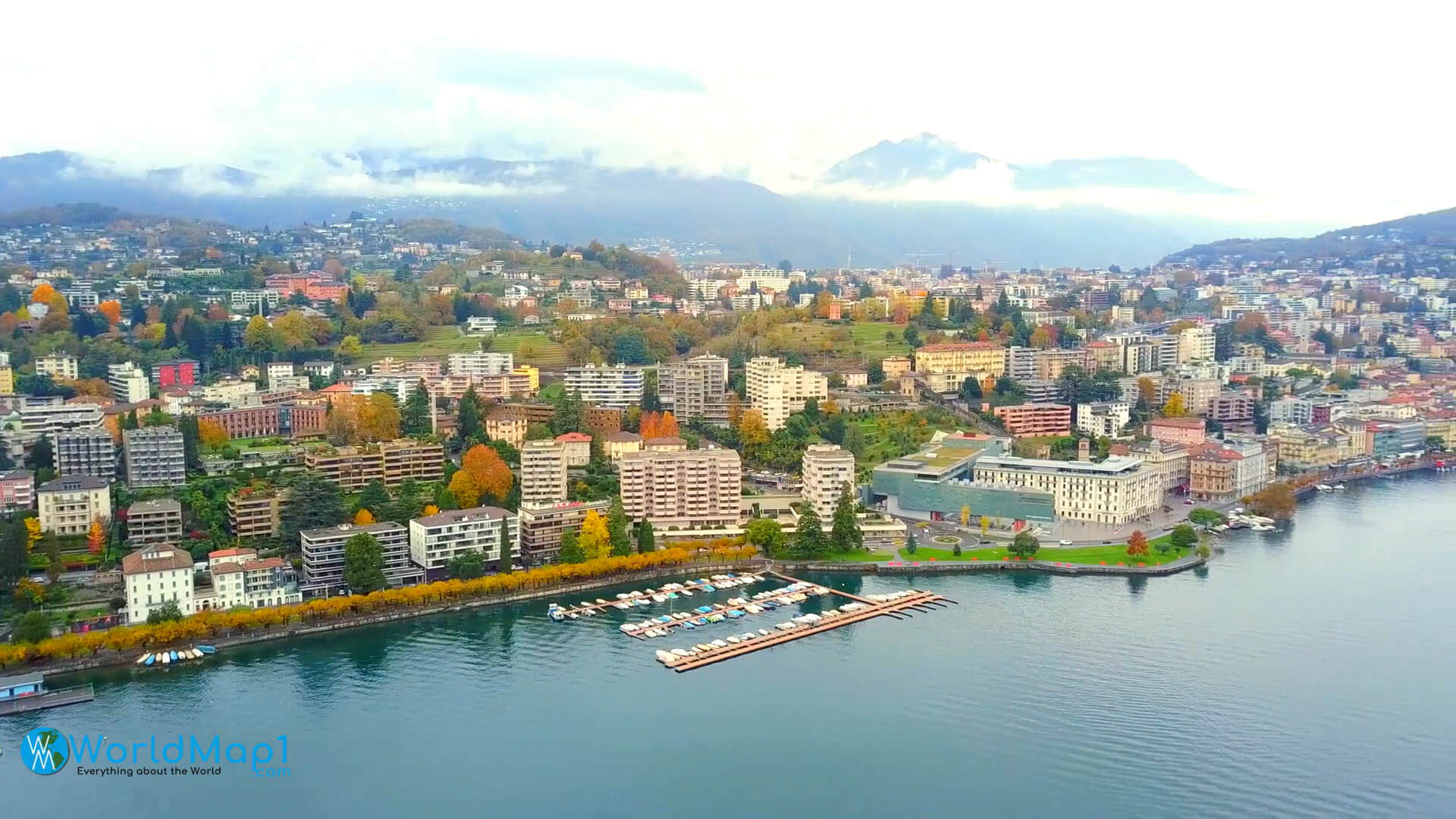
Lugano has been home to many notable people, including:
- Marco D'Amore: Actor, director and writer. He is best known for his performances as Salvatore Giuliano in the film Il Divo and Pasquale Zagaria in Gomorra. He also played the lead role in the TV series Romanzo Criminale – La Serie.
- Lino Banfi: Actor, singer and television host. He is most famous for his roles as Gastone Moschin's assistant police commissioner Carlo Giarda on Sotto il vestito niente di niente (1969–70) and Commissario Maigret on Maigret (1989–92).
- Gianluca Zambrotta: Footballer who played for Italy national team from 2001 until 2010 and was part of their 2006 World Cup winning squad. Zambrotta was born in Lugano to an Italian father from Bari named Vito Zambrotta (1949–2014), who played professional football with clubs such as Atalanta B.C.. His mother had Swiss origins but she never lived there herself.
- Giorgio Armani: Fashion designer who founded his eponymous brand in 1975 through a cooperation with GFT Group SPA. Armani has been described by The New York Times as "the leading proponent" of luxury fashion,. In 2003 Forbes magazine estimated his net worth at $8 billion, making him one of the richest men alive at that time (and still today). Armani was born into a family with rich industrial traditions; he attended military school before enrolling at Politecnico di Milano where he studied architecture but left after three years due to lack of interest.. After switching careers from architecture back into fashion design he opened up a small boutique called Studio.
Lugano is a beautiful city with a rich history. It has been used as the location of many films and TV shows, as well as having some of its own attractions. Whether you plan to visit or live there yourself, we hope this article has given you some insight into what makes it so great!
